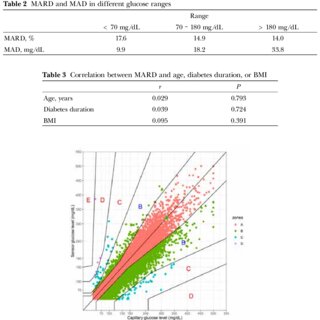If you or a loved one lives with diabetes, you’ve likely heard terms like “accuracy” and “reliability” when it comes to blood sugar monitoring. But what exactly does MARD in diabetes mean—and why should you care? Whether you’re using fingerstick tests or a continuous glucose monitor (CGM), understanding MARD can help you trust your device and make better-informed decisions. Let’s break it down in simple, practical terms.
What Does MARD Stand For in Diabetes?
MARD stands for Mean Absolute Relative Difference. It’s the gold-standard metric used to evaluate how closely a glucose monitoring device—like a CGM or flash glucose monitor—matches actual blood glucose levels measured in a lab.
In plain English: MARD tells you how accurate your glucose readings are, on average.
- A lower MARD percentage = higher accuracy.
- Most modern CGMs aim for a MARD of ≤10%, which is considered clinically excellent.
- The FDA generally accepts devices with MARD under 15% for approval.
For example, if your true blood glucose is 100 mg/dL and your CGM reads 110 mg/dL, the relative difference is 10%. If this pattern holds across many readings, the MARD would be around 10%.
Why Is MARD Important for People with Diabetes?
Accuracy isn’t just a technical detail—it directly impacts your health and safety.
- Low MARD = fewer false alarms for highs or lows.
- Better treatment decisions: Accurate data helps you dose insulin correctly, avoid hypoglycemia, and manage meals confidently.
- Peace of mind: Knowing your device is reliable reduces anxiety around glucose management.
According to a 2022 study published in Diabetes Technology & Therapeutics, CGMs with MARD below 9% significantly reduced time spent in hypoglycemia compared to less accurate devices.
How Is MARD Calculated? (Step-by-Step)
MARD isn’t just a single number—it’s derived from hundreds of paired readings. Here’s how it works:
- Collect paired data: Take a reference blood glucose measurement (via lab-grade meter or venous draw) at the same time as your CGM reading.
- Calculate relative difference for each pair:Relative Difference (%)=Reference ValueCGM Value−Reference Value×100
- Average all differences: The mean of these percentages is the MARD.
💡 Note: MARD doesn’t tell you when errors happen (e.g., during rapid glucose swings), only the average error across all conditions.
For deeper technical context, see the Wikipedia entry on glucose monitoring .

MARD Comparison: Popular CGM Devices (2024 Data)
| Dexcom G7 | ~8.1% | Real-time alerts, 10-day wear | Type 1 & Type 2 on intensive insulin |
| Abbott FreeStyle Libre 3 | ~7.9% | No fingersticks, 14-day sensor | Cost-conscious users, Medicare-eligible |
| Medtronic Guardian 4 | ~8.7% | Integrated with insulin pumps | Pump users |
| Eversense E3 | ~9.1% | 6-month implantable sensor | Long-term monitoring needs |
Source: Manufacturer data & independent validation studies (2023–2024)
Key takeaway: All major CGMs today perform well, but Libre 3 and Dexcom G7 lead in accuracy.
Limitations of MARD: What It Doesn’t Tell You
While MARD is useful, it has blind spots:
- ❌ Ignores directional accuracy: A CGM might show your glucose is rising when it’s actually falling—MARD won’t catch this.
- ❌ Less reliable at extremes: Accuracy often drops when glucose is very low (<70 mg/dL) or very high (>250 mg/dL).
- ❌ Doesn’t reflect real-world variability: Lab conditions ≠ your daily life (exercise, hydration, temperature).
That’s why experts recommend combining MARD with other metrics, like PARKES error grid analysis or time-in-range data, for a fuller picture.
How to Use MARD When Choosing a Glucose Monitor
Don’t just pick the device with the lowest MARD—consider your lifestyle:
- Check your insurance coverage: A 7.9% MARD device is useless if you can’t afford it.
- Assess your glucose patterns: If you often experience rapid swings, prioritize devices with strong lag-time performance (e.g., Dexcom G7).
- Read real-user reviews: Clinical MARD ≠ your personal experience. Platforms like DiaTribe or Beyond Type 1 offer honest feedback.
- Ask your healthcare team: They may have data on which devices work best in your demographic (e.g., children, elderly, athletes).
FAQ: Common Questions About MARD in Diabetes
Q1: Is a MARD of 10% good enough for daily use?
Yes! A MARD ≤10% is considered excellent for real-world diabetes management. Most users won’t notice meaningful differences between 8% and 10% in daily life.
Q2: Can MARD change over time?
Yes. Sensor performance can degrade due to:
- Poor insertion technique
- Dehydration
- High humidity or extreme temperatures
Always follow manufacturer guidelines to maintain accuracy.
Q3: Do fingerstick meters have a MARD too?
Absolutely. Traditional blood glucose meters (BGMs) also report MARD—typically between 5% and 10%. However, they only give a snapshot, not continuous trends.
Q4: Why do some CGMs have different MARD values in different studies?
MARD varies based on:
- Study population (adults vs. children)
- Glucose variability in participants
- Reference method used (lab vs. BGM)
Always look at peer-reviewed, independent studies, not just manufacturer claims.
Q5: Does MARD affect insurance approval?
Indirectly. Insurers often require FDA-cleared devices, and the FDA uses MARD (among other metrics) for clearance. So yes—low MARD helps a device get approved and covered.
Q6: Can I calculate my own MARD at home?
Not precisely—but you can spot-check accuracy. Compare your CGM reading to a fingerstick test (using a quality meter) 3–5 times per week. Consistent differences >20% warrant a call to your provider or device support.
Conclusion
Understanding what MARD in diabetes means empowers you to choose the right glucose monitoring tool and use it with confidence. While no device is perfect, today’s top CGMs offer remarkable accuracy—often within 8% of lab values—giving you reliable data to manage your health day in and day out.
If this guide helped clarify MARD for you, share it with someone who lives with diabetes! A quick post on Facebook, Twitter, or Instagram could help a friend make a smarter choice about their glucose monitor.
Stay informed. Stay accurate. Stay in control.
Leave a Reply